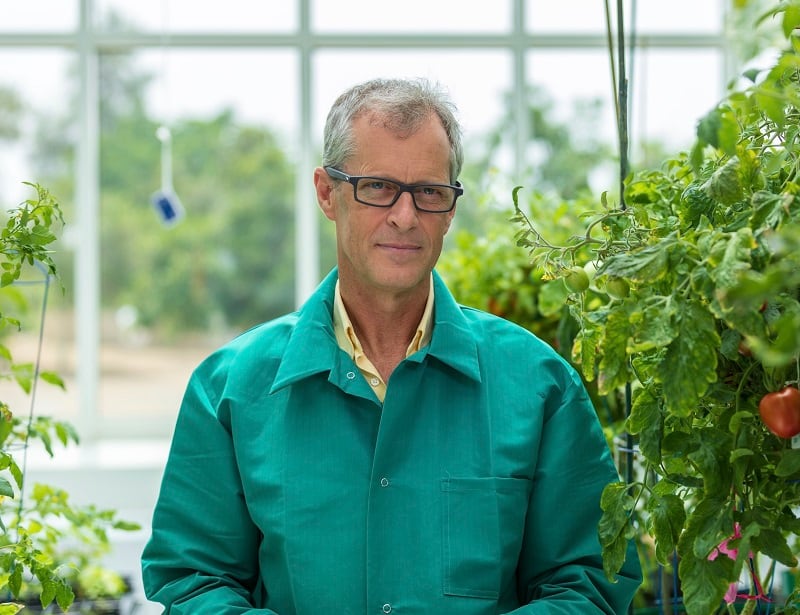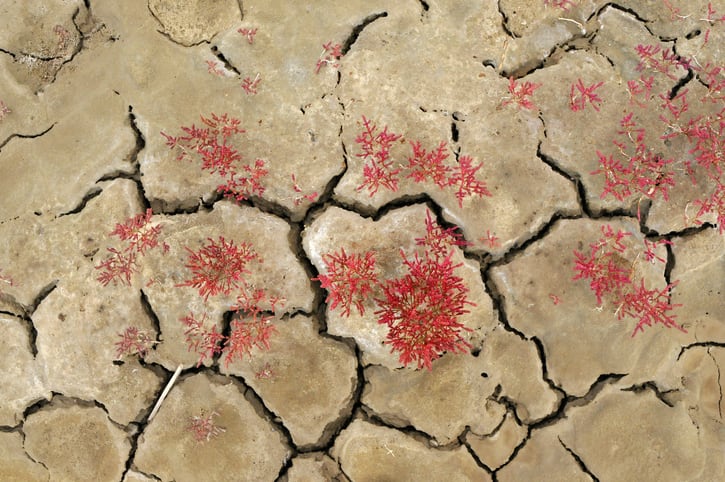Saudia Arabia is a tough place to grow crops. The combination of a hot dry climate and barren sandy soils mean getting anything to grow is often a struggle.
Yet as climate patterns grow more extreme, a similar fate threatens to spread around the world with 2 billion people living in places vulnerable to desertification. That is why the race is on to find a way to keep growing crops in even the harshest of circumstances.
Mark Tester is a professor of plant science at the King Abdullah University of Science and Technology (KAUST), a Saudi Arabian research facility spearheading innovation in crucial sectors such as agriculture, energy, and water management.
For the last decade, the celebrated plant scientist has been experimenting with wild tomatoes, looking to reintroduce some of the genetic variety for resilience against drought and heat now bred out of the modern gene pool.
His research has been commercialised through Iyris – formerly Red Sea Farms – a company that has so far raised $40m for its technologies helping farmers grow fruit and vegetables in some of the toughest conditions on earth.
While its flagship product is a heat blocking nanoparticle dispersed in greenhouse roofs to reduce heat, Tester’s work drives Iyris’ plant genetics arm which sells millions of seeds for plants resilient to salinity, heat, and drought.
Back to the future
The science behind it is nothing novel, as even Tester admits, but its impact could be revolutionary. “It’s very weird because this could have been done 50 years ago,” he says. “I’m doing stuff which is low-risk 1970s science, if I’m honest. But nobody has put all of the steps together.”
Tester’s work began with the very standard process of breeding together a wild tomato and a domesticated plant to create a root stock onto which farmers can graft a fully domesticated tomato.
What differed was opting to breed plants that produce low-quality tomatoes that can thrive in tough outdoor conditions, as opposed to others’ work that focused on high-value plants grown in greenhouses.
“These are open field processing tomatoes. They are low value per plant,” says Tester. “But the impacts of our root stocks on the yield are so massive, it actually starts to make a business case.”
“We’re talking about the plants on our root stocks being two and a half times the size of the plants that are normally grown.”
Tester didn’t stop there though. In a second “flash moment of inspiration”, the scientist realised that by doubling the number of chromosomes in the hybrid plant, he could induce them to breed true and dramatically cut the cost of production.
“It’s immortalizing the hybridization. So rather than having to do all of this by hand with massive labour costs, you can have a plant which is breeding true and pollinated by bees, or just hitting the plants with a stick,” Tester explains.
“So it’s a very, very neat system, very powerful, and you get plants which are intrinsically more robust, simply because they’ve got twice as many chromosomes.”
Again, this is nothing especially revolutionary. Wheat, for example, has six sets of chromosomes and was developed thousands of years ago. But for Tester, this now enables him to breed in numerous traits, whether it be heat tolerance or disease resistance, that would otherwise have been too complex to introduce.
“We’re going as fast and hard as we can to develop as many different crops and deliver them to the marketplace.”
Mark Tester
At times, Tester appears genuinely confused that no-one else has stitched his three steps together. “When I had the idea I was thinking: ‘this is old stuff’, but nobody seems to have done it,” he reiterates.
He hired a lawyer, searched for patents, and found nothing except a paper from a research group in Florida who created a similar process with citrus fruit but for “completely different reasons with completely different methods,” Tester says. “So I’m not completely insane thinking this up. At least there’s a little bit of something out there.”
Tester recalls describing the process to “one of the top watermelon guys in the world”.
“He went: ‘this is great.’ And then when I told him about the hybridization, he sat back in his chair, and you could see him going: ‘why didn’t I think of that?’ It’s just that final step, which is very exciting and really, very powerful.”
Significant results so far
That is at least the hope. While Tester has registered significant results in field trials of his tomatoes, the newly created seeds of other plants are yet to be fully trialled.
Tester is realistic in assuming the same efficacy will always emerge. “When we did it with the tomatoes, it was unbelievably effective. And so that was lucky, I suspect. If we get results like that that are as good as we’ve had in the tomato in other species, that would be just incredible.”
The process has so far been transferred to the watermelon rootstocks with trials now underway. Aubergines, peppers, and pumpkins are also coming up. “We’re just going as fast and hard as we can to develop as many different crops and deliver them to the marketplace,” Tester says.
On the tomatoes, meanwhile, Tester’s work now is focused going back to the grandparents and selecting as intelligently and strategically as possible to combine the best set of traits in their offspring.
It’s an idea as old as agriculture itself. But it wouldn’t be the first creative breakthrough to put together some old processes and produce something sufficiently inventive to transform a market.




